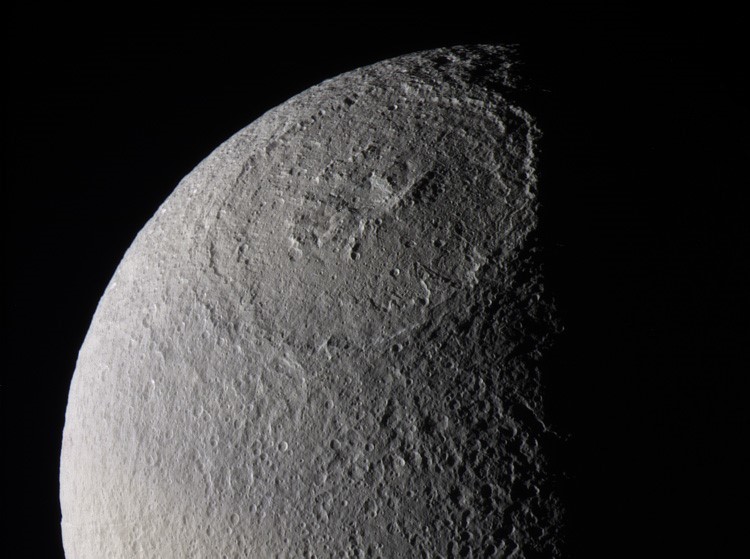Astronomy A black hole wandering at high speed through the Milky Way
The astronomer Rafael Bachiller reveals to us in this series the most spectacular phenomena of the Cosmos.
Topics of exciting research, astronomical adventures and scientific news about the Universe analyzed in depth.
Study of the elliptical craters on Tethys and Dione reveal details about the age, formation, and evolution of these two moons of Saturn.
"Stars" of Louis XIV
More than 80 moons are known to orbit Saturn.
At the head of them
, Titan
is particularly interesting for its rich atmosphere that bears similarities to that of early Earth.
The next 7 medium-sized satellites are all covered in craters and ice.
Dione and Triton
are the fourth and fifth moons, following the order of their size.
Both were part of the group of the "
four stars of Louis XIV
", as their discoverer,
Giovanni Cassini,
called them in 1684.
These two satellites have diameters slightly greater than 1,000 kilometers and both are crossed by faults and areas of tectonic fractures that indicate the existence of certain geological activity.
With surface temperatures hovering around minus 200 degrees Celsius, both moons are covered in ice.
thousands of craters
Perhaps what stands out most in the appearance of the two satellites are the
surfaces riddled with craters
of various sizes.
The diameters are greater than 35 kilometers in many of them and reach 100 kilometers in some cases.
The largest of them is the
Odysseus crater on Tethys
whose diameter of 400 kilometers reaches two fifths of the diameter of the satellite.
The different morphologies and orientations of these craters are the result of the impacts that the satellites have suffered since their formation.
Such impacts were caused by the
fall of meteorites and asteroids
that abounded in the early stages of the evolution of the solar system.
Some of these collisions must have been so violent that they may have changed the satellite's spin orientation.
We could say that the history of the evolution of these moons is written in their craters.
ellipticals
Trying to read this story by studying the peculiarities of such craters is what a group of astronomers from the Southwest Research Institute is doing under the coordination of postdoctoral researcher
Sierra Ferguson
.
The team has been examining the extremely detailed images obtained by the Cassini spacecraft in 2005 and compiling statistics on the
location, size and shape of the thousands of elliptical craters that cover the surfaces of Tethys and Dione
.
These elliptical craters, which are formed in the fall of slow and grazing projectiles, can give clues about the direction from which such bodies arrived.
Ferguson et al. have found that elliptical craters located in the equatorial regions of Tethys and Dione are oriented preferentially in an east-west direction, while those located closer to the polar regions have random orientations.
From these data, the astronomers conclude that
the impacts are not completely chaotic, but some systematic behavior can be identified
.
In fact, two types of projectiles can be distinguished.
Those that impacted near the equator could have come from debris disks (also roughly equatorial) that surrounded each of the moons or, perhaps, from a single disk that could have surrounded both moons.
However, the projectiles that fell at high latitudes are similar to those seen on Neptune's large moon Triton and appear to represent a background population with a planet-centric structure.
From the characteristics of the craters it is deduced that the age of these moons is of the order of
billions of years
.
As we can see, the identification of patterns in the craters provides very valuable information on the formation mechanisms of these moons and on their early evolution.
Ferguson now plans to compare these data with those from the satellites of other giant planets.
Particularly interesting are the moons of neighboring Uranus.
But to carry out a study of this style on these bodies, it is necessary to obtain more detailed images, something that is expected to be achieved with a new space mission to that planet.
The results of Ferguson and colleagues have been published in the article
A
unique Saturnian impactor population from elliptical craters
in a recent issue of the journal Earth and Planetary Science Letters.
Rafael Bachiller is the director of the National Astronomical Observatory (National Geographic Institute) and an academic of the
Royal Academy of Doctors of Spain
.
Conforms to The Trust Project criteria
Know more
Astronomy

